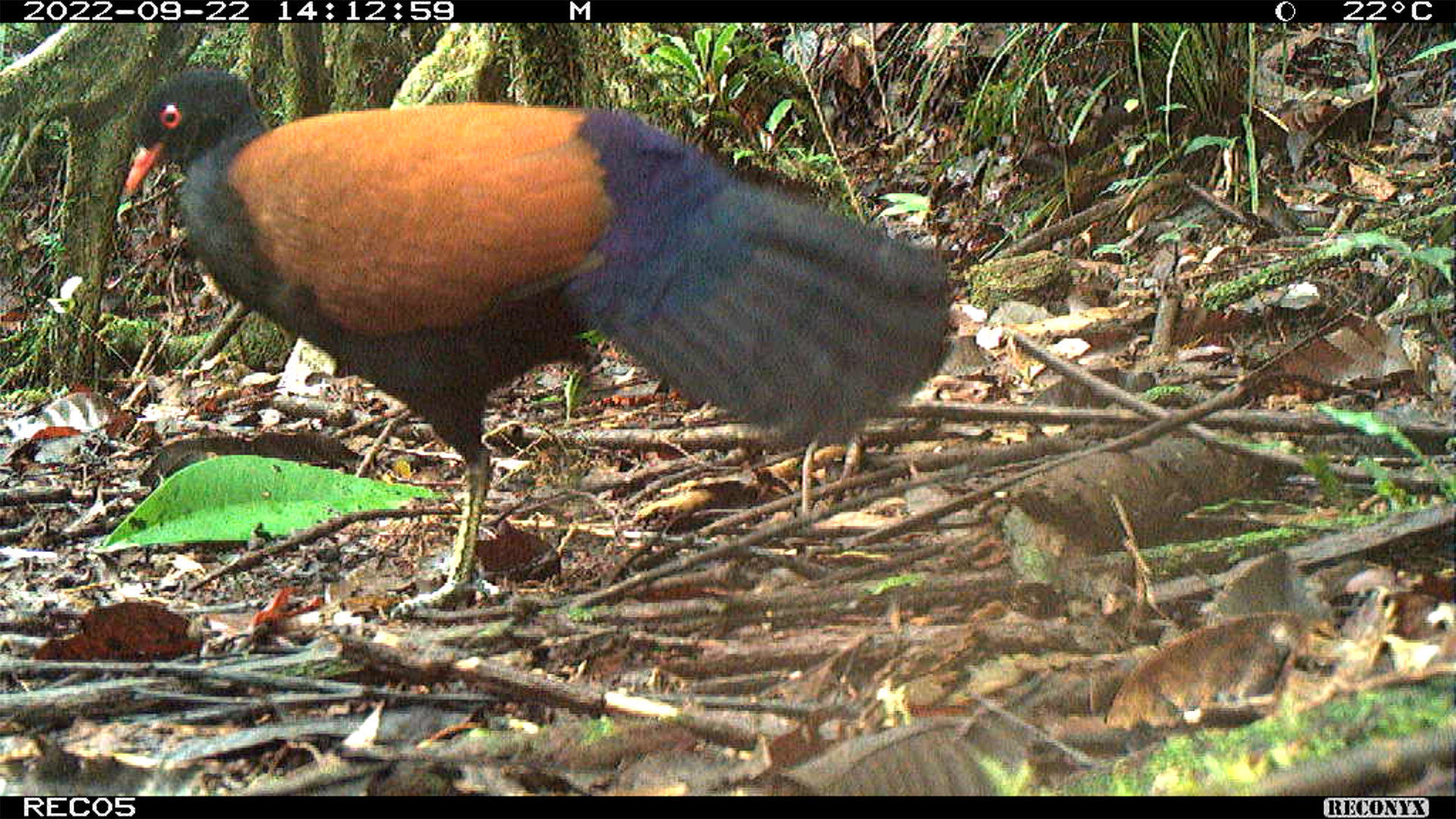Long-lost bird species, thought to be extinct, captured in images for 1st time in 140 years
Images and footage of the black-naped pheasant-pigeon were recently captured by scientists. This is the first documented sighting of the elusive bird since 1882.

For the first time in 140 years, researchers have scientifically documented a rare bird called the black-naped pheasant-pigeon (Otidiphaps insularis), a reclusive species native to the steep forested slopes of Papua New Guinea's Fergusson Island.
For more than a century, the species was thought to be lost to science, possibly extinct. But in 2019, a survey team composed of Indigenous Papua New Guinean and U.S. researchers heard rumors from local people of a rare ground-dwelling bird called an "auwo" haunting the underbrush, and this year, they finally captured footage of the long-lost animal.
"It wasn't until after we returned to the U.S. that we realized that the species hadn't been observed since 1882," Jordan Boersma, a researcher at the Cornell Lab of Ornithology and co-leader of the expedition, told Live Science.
With the financial and organizational aid of the Papua New Guinea National Museum and the American Bird Conservancy, Boersma organized a second expedition to Fergusson Island to look for black-naped pheasant-pigeons. In September 2022, after multiple delays caused by COVID-19, the team finally made it back there. And this time, they found what they were looking for — eventually.
RELATED: Fowl play? 'Bird of the Year' winner in New Zealand contest is a bat
It took Boersma and his team nearly a month to track down someone who had seen the bird more recently than the mid-1990s. Finally, they spoke to Augustin Gregory, a local hunter, who pointed them in the right direction. "At that point the bird kind of felt like a mythical creature, because we'd been chasing it so long," Boersma said.
The expedition members set up a series of camera traps on Mount Kilkerran, the island's tallest mountain. Two days before they were scheduled to leave, their patience paid off: One of the cameras captured photos and video footage of a real, live pheasant-pigeon.
Sign up for the Live Science daily newsletter now
Get the world’s most fascinating discoveries delivered straight to your inbox.
One reason that scientifically documented sightings of the black-naped pheasant-pigeon have been so rare historically is that the bird was only recently designated a separate species from its mainland relatives. Previously, it was considered a subspecies of the pheasant-pigeon (Otidiphaps nobilis), until the distinction became official in 2014. Another reason is that Papua New Guinea (and Fergusson Island, in particular) is remote, densely forested and quite mountainous. "It takes a long time to cover a little bit of ground," Boersma said.
Unfortunately, the newly rediscovered bird is already under threat. The region where the researchers snapped their photos is slated to be logged within the next few weeks. But the researchers and Fergusson Island inhabitants alike are hopeful that by bringing attention to the black-naped pheasant-pigeon, they can help save the species — and its forest home.
"We still know practically nothing about the species," Boersma said. "So it's important that we start to learn things about its ecology, which is why we're planning a return trip. For now, all we really know is that it still exists."

Joanna Thompson is a science journalist and runner based in New York. She holds a B.S. in Zoology and a B.A. in Creative Writing from North Carolina State University, as well as a Master's in Science Journalism from NYU's Science, Health and Environmental Reporting Program. Find more of her work in Scientific American, The Daily Beast, Atlas Obscura or Audubon Magazine.









